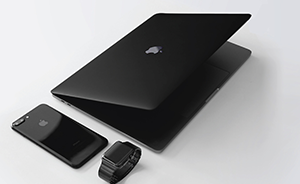Six steps to drastically improve website performance
- Written by
- Cameron Fraser
- Date
Slow loading times of your websites can have a detrimental effect on the success of your website. Some of the outcomes from slow loading websites include;
- page abandonment
- drop off in conversions
- an impact to Search engine ranking
- decreased trust of your site
Fortunately, with the right hosting environment and a capable Content Management System (CMS), page speed can be significantly improved by implementing these six recommendations.
1. Combine and concatenate CSS and Javascript files
By combining and concatenating CSS and Javascript files we achieve two main things;
- reduce the number of HTTP requests
- reduce the size of the HTTP requests (lower bandwidth)
There are many tools available within Joomla, WordPress, and Drupal to achieve this. The performance benefits can be quite substantial to the user with fewer files and smaller files to download.
2. Use a Content delivery network
A Content delivery network (CDN) is a series of servers located throughout the world that can be used to store and serve your static website assets such as stylesheets, javascript, images, PDFs etc.
The benefit of a CDN is its ability to reduce the load on your web server, which without a CDN would be required to serve the file types mentioned above. On high traffic websites, any means to reduce the load on the web server is incredibly beneficial. CDNs can speed up your website as well as increase the amount of traffic that your website can handle without falling over. This website uses a CDN as part of the WP Engine hosting platform.
3. Utilise page caching

Page caching is available in many CMS’s. It is best suited to websites that display the same content to all users. Think of a news website, blog, government sites etc. Page caching improves performance as it essentially takes a snapshot of a webpage and displays this snapshot to users. The speed improvement is achieved by not needing to connect to a database and to render a page dynamically every time a user visits the page. Page caching within CMS’s such as Drupal, Joomla or WordPress can be fairly simple to set up.
4. Enable GZIP compression
Enabling GZIP makes it possible to reduce the size of files up to 30% of its original size before these files get sent to the browser of a user. These files are then decompressed on the user’s browser to its original state. The benefit of using GZIP is that the size of the files a user needs to download are greatly reduced, which will improve page loading times significantly. Some CMS’s such as Joomla have settings within their configuration to easily turn GZIP compression on.
5. Use PHP 7
If you are using Drupal, WordPress or Joomla and are running on a PHP version less than 7, we would recommend upgrading to PHP 7. Tests have shown a 2-3x improvement using PHP 7 over PHP 5.
6. Utilise browser caching
Utilising browser caching can provide enormous performance benefits to the user. When enabled this will cache assets such as Stylesheets, Javascript, Images and even files such as PDFs, Word docs etc. on a users computer, so that every time they revisit your site, they do not have to download these resources again. Care does need to be taken with assets that are regularly updated to ensure that the user is always seeing the most up-to-date assets.
Related articles

FoodSmart goes Multilingual
Learn how we upgraded the FoodSmart website and Food Safety Program to cater for Arabic, Simplified Chinese and Vietnamese.

Redeveloping our site using a Headless CMS
Speed, Security and Stability are just some of the benefits we have seen from transitioning to a Headless CMS. Learn more

What are the benefits of a Headless CMS?
We compare Traditional, Headless and Decoupled CMS and outline why your organisation may want to consider a Headless CMS